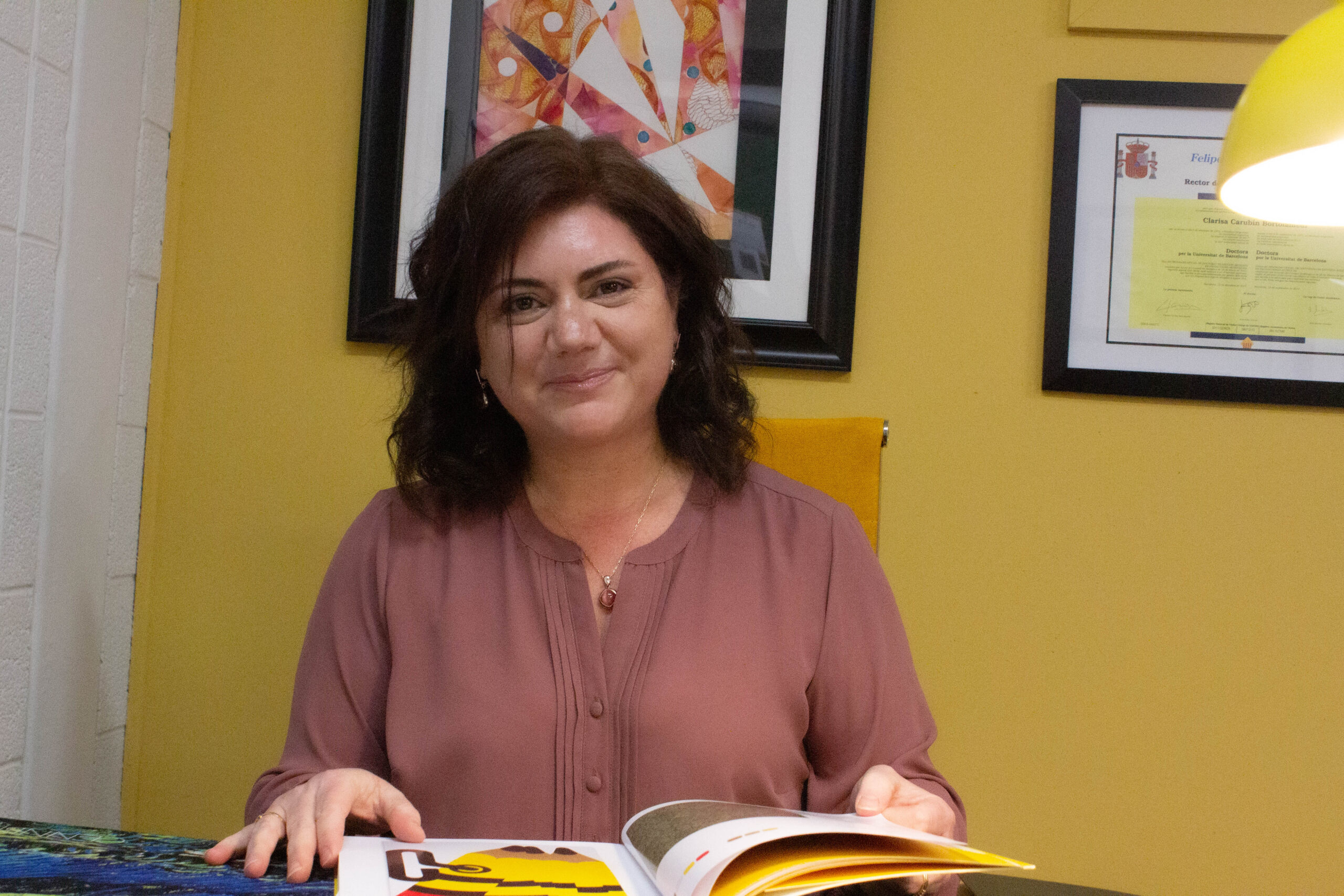Professor of graphic design Clarissa Carubin shares her love of art and helping students achieve their best work. PHOTO CREDIT: Maddie Bataille | Photo Editor
Born into a family of artists, professor of graphic design Clarisa Carubin knew that being a daughter of an architect and designer she could pursue art.
Carubin studied design for many years, gaining her undergraduate degree in design at the University of Cuyo in Argentina, and receiving her master’s and doctorate of art and design at the University of Barcelona in Spain.
Originally from Argentina, Carubin said that having studied and worked in so many countries, she no longer feels as though she is from one place but rather has a part of her from each place she has lived in.
When Carubin arrived at the University of Rhode Island in 2017, she was excited because the move would help her finish her Ph.D. and begin working to create a graphic design track at the University.
According to Carubin, when she began working at URI, there were no basic graphic design courses available for students. She worked to develop two courses, ART 204: Graphic Design I and ART 304: Graphic Design II, which started running in 2018.
Since then, Carubin helped to give direction to the motion design course and is currently creating a course that combines design and data which is planned to run in the spring 2023 semester.
Carubin noted that creating a path for graphic design not only helped students of the fine arts, but also students interested in design from all majors.
“Maybe people may think it’s [graphic design] is about making pretty things, but it’s much more than that,” Carubin said. “The importance of graphic design comes from understanding its intent. Graphic design, or design itself, is about communicating a message.”
In Carubin’s experience working in design, she noted that undergraduate graphic design students explore the creation of graphic design and the process of working with a client. However, doctorate students in design are focusing on the discipline, which is the principles that make up the art form.
While designing, Carubin said that she is very picky with her work.
“I always want to continue to work on something, even when something is ready,” Carubin said.
Professor Carubin brings this trait into her classroom.
“She is one of the professors that I can tell, wants to help in any way she can,” junior Kendall Bousquet, a Creative Writing and Art major with a concentration in Graphic design said.
Bousquet said that she has her own freelance graphic design business and often Carubin will send her clients and help her grow her network.
“It’s more about helping them to achieve that way of thinking, to be open, and to be critical thinkers,” Carubin said about her classes.
Even for students who are not in the fine arts, graphic design can help develop these skills, she said.
Olivia Dibold, a sophomore psychology major, said as her first time doing graphic design that Carubin gives good advice to new learners.
“In graphic design you don’t only have a client, you always have a target audience you have to communicate that message to,” Carubin said. “It’s a relationship between the constant development and the final design piece that you have.”

